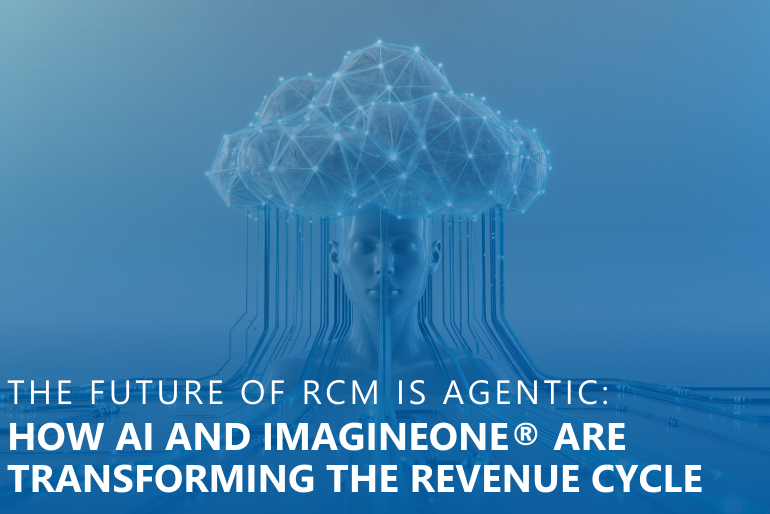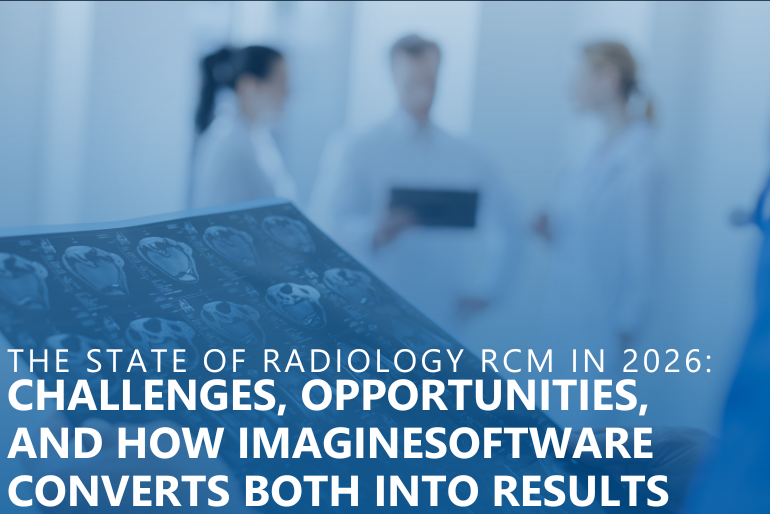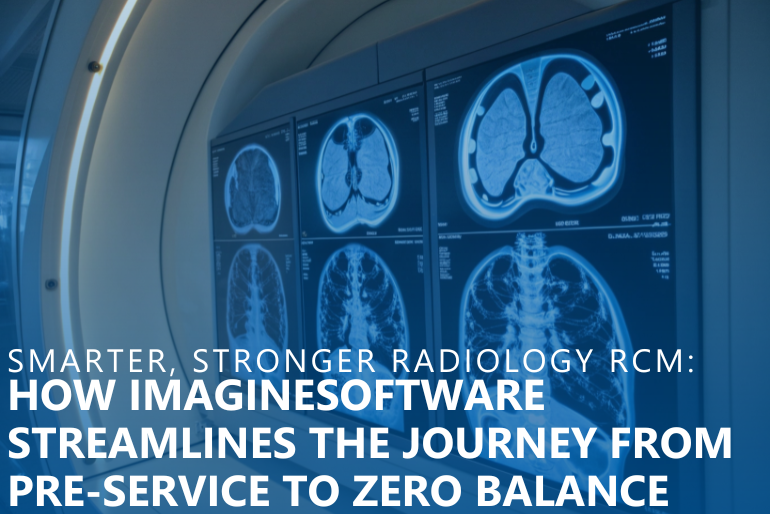New Orleans is home to a vibrant live-music scene, historic architecture and Creole and Cajun cuisine. No wonder more than 19 million people annually visit this Louisiana city.
Earlier this year, the ImagineSoftware team had the privilege of joining nearly 1,000 attendees at the 2023 Executive War College in New Orleans. Along with a host of the pathology industry’s pre-eminent pathologists, laboratory administrators, executives, consultants and other professionals, we had the opportunity to learn about the trends and challenges affecting the industry and the importance of addressing them for future operational and financial success.
This year’s event focused on a variety of challenges, from key developments in laboratory regulatory and compliance requirements to the supply-demand gap for skilled pathologists. Industry experts discussed progressive steps to solve pain points in laboratory revenue cycle management, the importance of pre-and post-analytical service functions in the clinical and anatomic lab marketplace and much more.
Perhaps many of the challenges faced by the pathology industry aren’t much different from those in other areas of healthcare. Staffing shortages, increasing costs and the transition to value-based care continue to shape business decisions, even as the pathology market is expected to register marked growth over the next decade.
Why such growth? Two of the biggest factors are the growing need for integrated healthcare facilities and the increasing prevalence of chronic conditions. Along with this, digital pathology is experiencing rapid growth worldwide.
Laboratory and pathology practices will need to prepare for and adapt to the trends shaping the industry to avoid alienating patients or losing out to competitors. The first step is understanding the impetus behind these developments and why they matter.
Trend #1: The Move from Reactive to Proactive Care
Reducing healthcare costs is a major goal for almost every practice, from primary care to pathology. To achieve this, some healthcare organizations are focusing more on the patient-centered model of proactive care.
It’s as simple as it sounds: instead of a patient being treated in reaction to an illness or injury he or she already has, proactive care enables physicians and patients to collaborate to address health problems before they occur or advance. Whereas reactive care utilizes often costly medical intervention to treat or manage existing conditions, proactive care emphasizes preventative healthcare to avoid hospital stays, emergency department visits and other more drastic interventions.
In addition to lower overall healthcare costs, the proactive care approach of managing high-risk conditions aids laboratories, health systems and hospitals in moving closer to value-based care. It allows them to more easily achieve the Triple Aim of improving the quality of patient experiences, improving the health of populations and reducing the cost of care.
For pathology practices, the proactive care approach will most likely result in the need for the right tests to be ordered at specified intervals necessary to detect disease at its earliest stages and enable doctors to better track their patients’ progress. Digital tools will help with this process and allow for earlier diagnoses, easier medication management and more proactive care interventions.
Trend #2: Growth of IDNs and Hospital Consolidation
There are 25,505 diagnostic and medical laboratory businesses and more than 4,000 pathology laboratories in the U.S. as of 2023, numbers that have remained steady over the past few years. The same cannot be said for integrated delivery networks (IDNs) and hospitals.
It’s estimated that there are anywhere from 600 to about 1,000 IDNs in the U.S. depending on how they’re categorized. All told the IDN market for this country is expected to grow at a compound annual growth rate of 10.1% to reach $2137.1 billion by 2027.
Largely due to mergers, the hospital sector has not achieved any such growth. As noted by the American Hospital Association, roughly 1,887 hospital mergers between 1998 through the end of 2021 reduced the number of hospitals from about 8,000 down to just over 6,000. Now, 67% of U.S. hospitals are system-affiliated.
The ongoing consolidation in healthcare means there are fewer independent hospitals and a shrinking number of smaller health systems. There are currently 407 health systems in the U.S., and about half of them have fewer than 1,000 hospital beds. Some healthcare industry experts predict this consolidation will occur until there are only five major national health groups in the nation.
Why are so many hospitals and health systems consolidating? Mostly to scale and reduce costs, provide additional care services, and strengthen their footprint in certain markets. It’s a form of vertical consolidation, like when hospitals or health systems employ physicians or acquire physician practices. The share of physicians working in practices at least partially owned by a hospital or health system increased from 23.4% to 31.3% between 2012 and 2022.
All this consolidation is resulting in fewer patients being treated in inpatient settings. Plus, more healthcare providers are investing in the transition to value-based care, which is intended to improve patient health outcomes and reduce costs. Research from McKinsey & Company suggests that the number of patients treated by doctors within the value-based care landscape could roughly double in the next five years.
Through such consolidation, bigger organizations with low overhead can conduct laboratory tests for a fraction of the cost of smaller labs, making financial sustainability much harder for those entities. The growing hospitals and health systems sometimes combine multiple medical labs to save costs, but laboratory staff is often one of the first cuts. There’s also a loss of competition between laboratories.
Trend #3: Healthcare Consumerism and the Rise of Retail Clinics
Gone are the days when patients played a passive role in their own healthcare. Today’s patients expect from the healthcare industry the same convenience and ease of access already available in retail and banking. With rising deductibles and out-of-pocket costs, they also expect price transparency.
This trend often is referred to as healthcare consumerism. It describes individuals proactively using trustworthy, relevant information, and appropriate technology to make better-informed decisions about their healthcare options, both within and outside the clinical setting.
Healthcare consumerism already has entered the laboratory market through direct-to-consumer lab services. It is estimated that the global market for direct-to-consumer lab services will double in the next two years, growing to $2.4 billion annually by 2025.
Another way in which laboratories and pathology practices are attempting to increase revenue and reimbursement while providing a seamless patient experience is by offering alternative sites of care. There are more than 2,000 retail health clinics in the U.S., and such facilities have seen a 200% increase in utilization over the past five years – higher than primary care, urgent care, and hospital emergency rooms.
Many of these retail clinics already offer some basic laboratory services. Some consumers prefer them over office-type settings because of their shorter wait times, convenient locations, and extended weekend and evening hours. A bonus is more price transparency through fixed pricing along with options for self-pay.
Probably the biggest target market for laboratory services in retail clinics is millennials — data indicates that they’re the largest demographic group accessing them. These individuals are more likely to research health and wellness information online and look for healthcare providers to be more transparent about the costs of visits and services. They’re less likely, though, to have a primary care provider.
Although a 2014 study predicted that by 2025, 75% of the U.S. workforce would be millennials, this generation comprises 35%. The patients in this age group expect relevant, personalized experiences. They expect the ability to book appointments, understand what they owe, refill prescriptions, and review test results online — instead of waiting for a call from a physician.
Optimize Your Pathology Group Revenue with ImagineSoftware
Encountering and overcoming these industry trends is possible with the right resources and team. By employing the ImagineSoftware platform, your patients receive quality healthcare with the price transparency they want. Our flexible pathology and laboratory billing solution enables you to perform and bill for individual tests as needed, submit claims within the allowable timeframe, and manage payment discrepancies by eliminating unbilled tests and eligibility errors. Plus, our customizable real-time reporting delivers robust business intelligence to enable practices like yours to monitor practice performance and predict future cost and revenue trends.
Request a demo to learn more!



